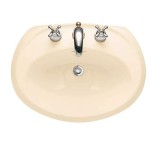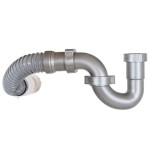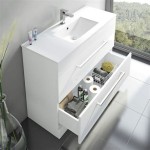63 Inch Bathroom Vanity Double Sink Dimensions: A Comprehensive Guide
The 63-inch bathroom vanity with a double sink configuration is a popular choice for homeowners seeking both functionality and aesthetic appeal in their bathrooms. This size offers ample counter space, allowing for comfortable simultaneous use by two individuals, which is particularly beneficial in master bathrooms or shared family bathrooms. Understanding the specific dimensions and considerations related to a 63-inch double sink vanity is crucial for proper planning and installation. This article will delve into the various aspects of these vanities, providing valuable information for those considering incorporating one into their bathroom design.
The term "63-inch" refers primarily to the width of the vanity cabinet. However, other dimensions, such as depth and height, are equally important for ensuring a suitable fit and comfortable usage. The depth of a 63-inch vanity typically ranges from 18 to 22 inches, while the height generally falls between 30 and 36 inches. These are standard measurements, but slight variations may occur depending on the manufacturer and the specific design of the vanity. Carefully reviewing the manufacturer's specifications is essential before making a purchase.
Double sink vanities of this size are available in a wide variety of styles, from traditional to contemporary, each with its unique characteristics and features. Common materials used in the construction of these vanities include solid wood, plywood, MDF (Medium-Density Fiberboard), and various combinations thereof. The choice of material influences the vanity's durability, water resistance, and overall aesthetic. Countertop options are equally diverse, encompassing materials such as granite, quartz, marble, ceramic, and even concrete. The selection of the countertop material directly impacts the vanity's appearance and its susceptibility to staining, scratching, and heat damage.
Key Point 1: Understanding Standard Dimensions and Variations
The standard dimensions for a 63-inch double sink vanity are approximations and can vary slightly across different manufacturers. When planning your bathroom renovation or construction, it's crucial to obtain the precise measurements of the specific vanity you intend to purchase. This includes the width, depth, and height of the cabinet, as well as the dimensions of the countertop and the sink basins themselves.
Width is the most commonly referenced dimension, and as noted, it typically measures around 63 inches. However, some models might be slightly shorter or longer, perhaps 62 or 64 inches. These slight variations are often due to design elements or manufacturing tolerances. For accurate fitting, knowing the precise width down to the nearest fraction of an inch is important, especially when the vanity is being placed in a confined space between walls or other fixtures.
Depth, or how far the vanity extends from the wall, is another important factor. A typical depth range is between 18 and 22 inches. A shallower depth might be suitable for smaller bathrooms where space is a premium, but it might also sacrifice storage space within the vanity cabinet. A deeper vanity provides more counter space and storage but requires more floor space in the bathroom. Choosing the right depth is a balance between available space and desired functionality.
Height usually falls between 30 and 36 inches. The specific height can influence comfort and accessibility, particularly for individuals of varying heights. Shorter individuals might find a lower vanity more comfortable, while taller individuals might prefer a higher model to minimize bending. Consider the heights of the primary users of the bathroom when selecting the vanity's height. Wall-mounted vanities offer the flexibility to adjust the mounting height, allowing for a customized installation that meets individual needs. However, this requires careful planning and reinforcement of the wall to support the weight of the vanity.
Sink basin dimensions are crucial, especially in a double sink vanity. The size and shape of the basins should be considered in relation to the overall counter space. Smaller basins might feel cramped when two people are using the vanity simultaneously. Larger basins provide more space for washing and grooming but may reduce the available counter space. The placement of the basins also matters. They should be positioned far enough apart to allow comfortable use by two individuals without bumping elbows.
Key Point 2: Storage Capacity and Configuration Options
One of the primary benefits of a 63-inch double sink vanity is the ample storage space it provides. However, the actual storage capacity and configuration can vary significantly depending on the design of the vanity. Common storage options include drawers, cabinets, and open shelving. The optimal configuration depends on individual needs and preferences.
Drawers are ideal for storing smaller items, such as toiletries, makeup, and hair accessories. Deep drawers can accommodate larger items, like hair dryers and styling tools. Full-extension drawers provide easy access to items stored at the back of the drawer, while soft-close mechanisms prevent slamming and reduce wear and tear on the vanity.
Cabinets are well-suited for storing larger items, such as towels, cleaning supplies, and spare toiletries. Adjustable shelves allow for customization of the storage space to accommodate items of varying sizes. Consider the type of cabinet doors when choosing a vanity. Hinged doors offer full access to the cabinet interior, while sliding doors are a good option for bathrooms with limited space.
Open shelving provides a convenient way to display decorative items or frequently used items. However, open shelving requires more frequent dusting and cleaning to maintain a neat appearance. Combining drawers, cabinets, and open shelving can create a versatile storage solution that meets a variety of needs.
Beyond the basic storage configuration, consider additional features that can enhance the functionality of the vanity. Built-in organizers, such as dividers for drawers and shelves, can help keep items neatly arranged. Electrical outlets and USB ports integrated into the vanity provide convenient charging stations for electronic devices. Integrated lighting can illuminate the vanity area and provide task lighting for grooming.
The interior construction of the vanity is as important as the exterior design. Look for vanities with solid wood construction or high-quality plywood for durability and longevity. Avoid vanities made of particle board or low-quality MDF, as these materials are prone to water damage and warping. The hardware, such as drawer slides and hinges, should be made of durable materials, such as stainless steel or heavy-duty metal, to withstand daily use.
Key Point 3: Installation Considerations and Plumbing Requirements
Installing a 63-inch double sink vanity requires careful planning and attention to detail. Proper installation ensures the vanity is stable, level, and properly connected to the plumbing system. If you are not comfortable with plumbing and carpentry work, it is advisable to hire a qualified professional to install the vanity.
Before installation, ensure that the bathroom floor is level. An uneven floor can cause the vanity to wobble or tilt, which can damage the cabinet and countertop. Use shims to level the floor if necessary. Locate the water supply lines and drainpipes. You may need to relocate these connections to align with the sink basins in the new vanity. If you are relocating plumbing, it is essential to obtain the necessary permits and comply with local building codes.
Turn off the water supply to the bathroom before disconnecting the old vanity or installing the new one. Disconnect the existing water supply lines and drainpipes from the old vanity. Clean the area thoroughly to remove any debris or old sealant.
Carefully position the new vanity in its designated location. Use a level to ensure that the vanity is perfectly level both horizontally and vertically. Secure the vanity to the wall studs using screws or bolts. This will prevent the vanity from tipping or shifting. Connect the water supply lines to the faucet tailpieces using flexible supply tubes. Be sure to use Teflon tape or pipe dope to seal the threads and prevent leaks. Connect the drainpipes to the sink drain assemblies and the main drain line. Use plumber's putty or silicone sealant to create a watertight seal around the drain flange.
After connecting the plumbing, turn the water supply back on and check for leaks. Tighten any connections that are leaking. Run water in both sink basins to ensure that the drains are functioning properly. If you notice any leaks or drainage issues, address them immediately.
Once the vanity is installed and the plumbing is connected, you can add the finishing touches. Install the cabinet hardware, such as knobs and pulls. Apply caulk around the edges of the vanity where it meets the wall and the floor. This will prevent water from seeping behind the vanity and causing damage. Clean the vanity thoroughly and remove any fingerprints or smudges.

Cambridge Plumbing 8129 63 Inch Double Sink Bathroom Vanity Set

Urban Woodcraft Bayonne 63 In X 22 36 Double Sink Bath Vanity Grey W Quartz Top White Basin Mirror 500h 63dv Bn G The Home

63 Inch Double Sink Bathroom Vanity Chestnut Finish Wx23 Dx36 H Chf036xlmtk

Urban Woodcraft Bayonne 63 In W X 22 D 36 H Double Bath Vanity White With Quartz Top Basin And Mirror 500h 63dv Bn The

63 Solid Wood Double Sink Vanity With Porcelain Counter Top Two Matching Vessel Sinks Faucets And Mirrors

Cambridge Plumbing 8129w 63 In Bathroom Vanity Set

Cambridge Plumbing 63 White Wood Double Vanity Set With Porcelain Cou Us Bath

63 Inch Espresso Wood And Glass Bathroom Vanity Set

63 Inch Asta Vanity White Sink Espresso

63 Inch Solid Wood Glass Double Vessel Sink Vanity Set With Brushed Nickel Faucets Com







